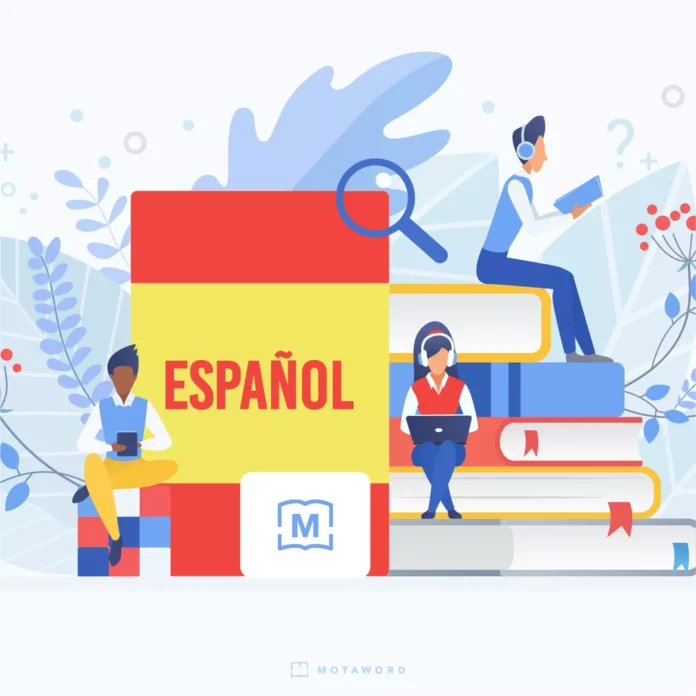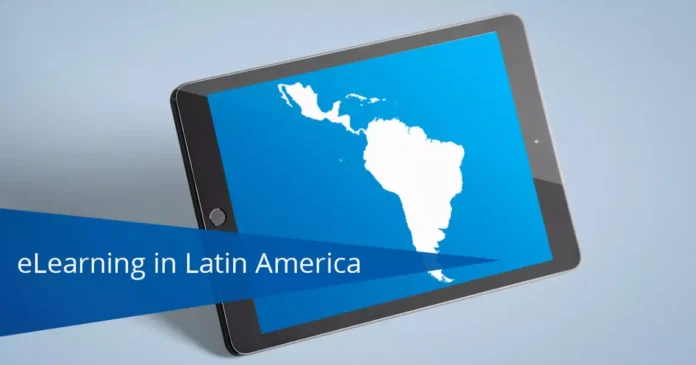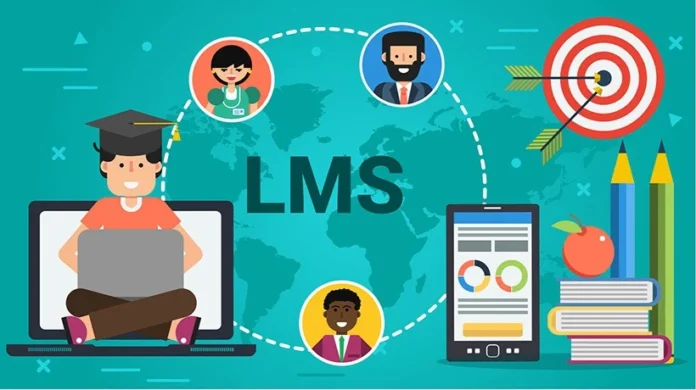Latin America’s e-learning market is growing gradually over time. Experts forecast that the revenue from this market will be over $3 billion by the year 2024. Also, experts assert that e-learning in Latin America will grow by 14% in a few years to come. Such growth sparks curiosity about the nature of this e-learning market.
What are some interesting facts to learn about Latin America’s e-learning market?
The Underdevelopment of Brick-and-Mortar Education Catalyses the Spur of E-Learning

For ages, Latin America has featured an under-developed brick-and-mortar education system. In other words, physical schools in this region lack several basic amenities. In return, their conditions are not appealing to learners.
Notably, the said underdevelopment of the brick-and-mortar education system is a ripple effect of the lagging economic development in the region. This situation has lasted for the past several decades. Physical schools’ deficiencies include scarcity of schooling equipment and infrastructure, qualified teachers, and financing.
One of the factors that make e-learning flourish is a deficient conventional schooling system. Given that education remains a core social aspect, e-learning comes as a relief to those who find a deplorable traditional school system wanting.
Online education is also cheaper than the traditional classroom education system. One does not need to commute or buy learning materials. Also, online education logistics are easy. You only need to show up in a secluded place with your internet-enabled gadget for you to learn.
The rural areas in Latin America experience the underdevelopment of the traditional education system more than the urban areas. For this reason, online education comes in handy as a means of getting an education to the region’s rural population.
International Vendors Often Run the E-Learning Market

Latin America always invites international vendors to invest in its e-learning market. For this reason, Latin Americans are free to take up international courses. However, most international vendors prefer aligning the e-learning courses with the Latin American environment.
For example, Coursera, an e-learning giant, decided to partner with popular Latin Universities to provide original Spanish content to e-learning students. In other words, international e-learning vendors engage providers of Spanish translation services to translate international content into Spanish.
High Internet and Technology Penetration Spurs E-Learning in the Region
Latin America leads when it comes to the adoption of mobile technology. This achievement facilitates a wide usage of the internet, in return making e-learning easily accessible.
Students facing financial challenges find it easy to invest in an affordable smartphone to help them access e-learning resources. For this reason, they save the cost of buying expensive laptops and desktops.
Notably, over 415 out of over 690 million Latin Americans had a mobile network connection in 2017. Also, 60% of all cellular connections were smartphone-enabled. Also, in the past few years, Latin American local mobile companies have been offering subsidies, instalment payments, and financing to those willing to buy a smartphone.
These statistics and facilitations depict that mobile phones are a key enabler of e-learning in Latin America because of their high availability.
E-Learning Also Applies To Corporates

E-learning in Latin America is not reserved for students only. Corporates are increasingly using this platform to improve the skills of their employees.
Given that the Latin American brick-and-mortar education system is underdeveloped, corporations are bridging the deficiency with internet learning. Employees who did not learn well because of the scarcity of resources are using internet learning to acquire working skills they missed during their schooling days.
Globalisation has made several Latin American corporations internationalise their business operations. To adjust to the ever-changing nature of this mode of operation, these corporations employ e-learning to keep their employees’ skills relevant in the market.
The Latin American corporations are also cutting training costs using E learning. Conventional venue-based training is expensive. To minimise this cost, Latin American corporations are using e-learning platforms to provide on-demand interactive training to their employees.
Number of Student Beneficiaries
In 2020, the Latin American internet learning market benefited around 984,000 students. Given this high number of beneficiaries, the statistics show that the education system in this region gradually recognizes the potential of internet learning.
Number of Adult Beneficiaries
By the year 2020, the number of Latin American adults who benefited from e-learning was around 12 million. Compared with the number of students that benefit from internet learning, adults benefit more than students from online education.
Global Ranking

In 2020, the Latin American internet learning market ranked 4th globally. This ranking shows that Latin America is among the global leaders in internet learning. Time can only tell whether the region will still appear in the top-5 list of global internet learning market leaders.
Share of Enrollment Fees
The Latin American internet learning market takes 6.4% of the total education enrollment fees.
Benefits of the Latin America E-learning
The following are some of the benefits of internet learning in Latin America:
- Fast delivery of lessons
- Reduced training and education costs
- Easy accessibility of learning from anywhere
Top E-Learning Demands
Each Latin American country has a unique need for e-learning. The following are some of the top demands among the leading internet learning countries:
- Colombia, Mexico, and Venezuela: Government
- Brazil: Schools
- Argentina: Corporation
- Chile: Consumers
Top E-Learning Innovations
Latin American experts are increasingly adopting various innovations to leverage internet learning. Some of the innovations are:
- Content as a Service (CaaS)
- School as a Services (Saas)
- Gamification
- Visual content
Major Vendors
Given that Latin America always welcomes international vendors to provide internet learning services, what are some major players?
- Kroton: In 2019, Kroton realised sales worth around 7 million BRL. Also, the company experiences a sales growth of 15.95%.
- Telefonica: The 2019 Telefonica sales were around 4.4 million BRL. Also, its sales growth was 1.85%.
- Pearson: Pearson earned around 3.9 million BRL in 2019. During the same year, its sales growth was -6.3%. This company seems to have experienced a drop in its sales growth. Notably, high competition can be one of the reasons this company experienced negative sales growth.
Government Intervention
Another interesting fact about the Latin American e-learning market entails government involvement. In several Latin American countries, the government hands out to students. In return, those who cannot afford internet-enabled gadgets get them for free.
The Latin American government’s involvement in e-learning stands as one of the most significant milestones in the facilitation of internet learning. If other stakeholders come onboard and do the same, most Latin American countries will be leaders of the internet learning system.
Notable E-Learning Trends in Latin America
Now that we have explored some facts about Latin American internet learning, what are some notable e-learning trends in the region?
Increased Use of the Learning Management Systems

A learning management systems (LMS) software can administer, document, track, report, and deliver training programs, educational courses, and programs for learning and development. The use of LMS, especially in Latin America, continues to grow. One reason for this growth is the increased adoption of bringing your own device (BYOD) among corporate and private schools.
The other reason for the increased popularity of the LMSs in Latin America is the government support of machine learning and artificial intelligence in LMSs. This support favours academic settings and corporations.
SaaS and cloud-based solutions are also becoming increasingly popular in Latin America. The reasons for this popularity include the provision of better connectivity and the online facilitation of planning educational and developmental opportunities.
Some of the LMSs that are popular in Latin America are:
Akdemia
- Year of development: 2012
- Developers: Valentina Delfino, Carlos Inguanzo, Juan Andrés, Carlos Lagrange, and Lagrange Delfino
- Purpose: Simplification of learning activities and providing all academic updates
Colegium
- Year of development: 2000
- Developer: Ariel Gringaus Higilchuk
- Purpose: Providing communication tools, extracurricular activities, library administration, billing, collections, etc.
Ludibook
- Developer: Ruben Arias and Felipe Pastenes
- Purpose: Providing a digital library to K-12 Spanish students, customised teachers’ feedback, and real-time student performance reports
Edoome
- Developer: Leonardo de la Fuente
- Purpose: Facilitating the setting up of virtual classrooms and sharing of quizzes and assignments, publishing grades
Early Childhood Development (ECDE)
E-learning is no longer reserved for young students and adults. Several enterprises are increasingly investing in childhood education. Between 2015 and 2017, “baby tech” startups raised over $260 million globally.
In Latin America, Luis Garza started Kinedu, a company that helped families understand the developmental needs of their babies. The baby tech company is the Brazilian-based PlayKids. This company offers educational content and products to babies around the world. In Columbia, BabySharks is a mobile application that can monitor, support, and evaluate the development of a child.
Language Learning

Latin America is witnessing the development of platforms to help its population learn English. One of the said platforms is Open English, which has helped several Latin Americans learn English and become success stories.
Regarding the international players, LingoKids is a Spain-based startup that helps Latin American children to learn English.
The Bottom Line
According to LatinoBridge, a language service provider, Latin America is a game changer in the e-learning market. Despite consuming internet learning significantly, the region is a hub for several innovations seeking to transform the internet learning market.
What do we expect in the Latin American future in terms of e-learning? Only time will tell. So, keep on watching this space.









